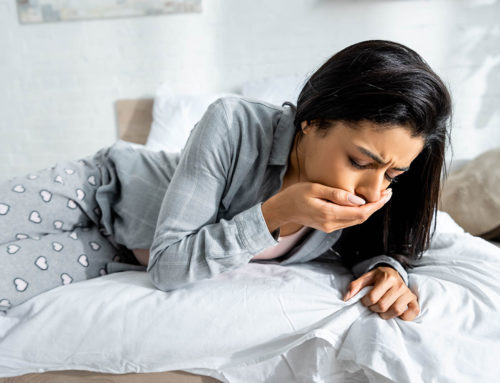Fear. It’s an essential part of our existence, a survival mechanism that our ancestors relied on. Yet, when this fear turns into an intense, irrational fear that triggers extreme anxiety or panic attacks, it transforms into something known as a ‘phobia’.
Phobias are not just common fears; they’re a type of anxiety disorder that can cause significant distress, interfering with a person’s everyday life.
According to the American Psychiatric Association, a phobia is classified as a mental health disorder, a type of anxiety disorder, more specifically. They’re typically categorised as either specific phobias, social phobias, or agoraphobia.
Specific phobias
A specific phobia is an intense fear related to a particular object or situation. They’re further divided into five categories: animal phobias, natural environment phobias, situational phobias, blood-injection-injury phobias, and other phobias.
Some of the most common phobias include:
- Arachnophobia (Fear of spiders)
- Ophidiophobia (Fear of snakes)
- Acrophobia (Fear of heights)
- Spheksophobia (Fear of Wasps)
- Emetophobia (Fear of Vomiting)
- Galeophobia (Phobia of Sharks)
- Lepidopterophobia (Phobia of Moths)
Other specific phobias include the fear of flying (aviophobia), fear of confined spaces (claustrophobia), the fear of change and even the fear of loud noises. The intense fear of needles (trypanophobia) can make medical procedures or treatments daunting.
Phobias can also extend to fear associated with certain symbols or patterns. For instance, Chromophobia is the fear of certain colors, while Triskaidekaphobia is the fear of the number 13. Some individuals even suffer from Hippopotomonstrosesquippedaliophobia, the fear of long words.
Social phobias
Social phobias, also known as social anxiety disorders, are a type of anxiety disorder characterised by an intense, persistent, and fear of being negatively evaluated or judged by others in a social or performance setting.
Phobia symptoms may include intense nervousness, self-consciousness, embarrassment, or humiliation. These feelings can be triggered by everyday situations such as speaking in public, eating or drinking in public, meeting new people, attending social gatherings, or even making phone calls.
At the heart of social phobias is a fear of scrutiny. This might be due to past experiences of being criticised or due to low self-esteem. The person fears that they will act in a way that will be embarrassing or humiliating, leading to rejection or ridicule.
One important aspect of this kind of phobia is the anticipatory anxiety that precedes social or performance situations. This means that someone with a social phobia may spend days or weeks worrying about a particular event or situation.
There are two main types of social phobias: generalised and specific. Generalised social phobia is characterised by a broad range of fears related to social interaction and is considered more severe. People with this type of phobia may experience anxiety and panic attacks in virtually any social situation.
On the other hand, specific phobia in social settings, also known as “performance only” social anxiety, involves specific social situations. The fear of public speaking is one of the most common phobias in this category.
Agoraphobia
Agoraphobia is an anxiety disorder that involves fear of situations where escape might be difficult. It could include open spaces, public transportation, or even just being outside of the home. The extreme fear of these situations often result in a significant disruption to the person’s life.
Unusual phobias
While the list of phobias above includes some commonly known fears, there are also some rather unusual phobias. Ailurophobia, for instance, is the fear of cats. Bibliophobia is the fear of books, and Eurotophobia is the fear of hearing good news. More obscure phobias include Dextrophobia, a fear of objects to the right side of the body, and Coprastasophobia, the fear of constipation or painful bowel movements.
Here’s a list of phobias that you may have never heard of:
- Ablutophobia: This is the fear of washing or bathing. It’s more common in children and women, and it can make hygiene practices very stressful.
- Nomophobia: This relatively new phobia refers to the fear of being without one’s mobile phone, or being unable to use it for some reason, like a lack of signal or a low battery.
- Pogonophobia: This is the fear of beards. Someone with pogonophobia might feel very uncomfortable or anxious around individuals with beards
- Turophobia: This is the fear of cheese. People with this phobia might be scared of certain types of cheese, or all cheese in general
- Omphalophobia: This is the fear of belly buttons. It could involve fear of touching or looking at belly buttons, including their own
- Papaphobia: This is the fear of the Pope, an extremely specific phobia
- Chrometophobia: This is the fear of money. People with this phobia might worry about handling money or have anxiety about financial matters in general
- Arachibutyrophobia: The fear of peanut butter sticking to the roof of the mouth
- Genuphobia: This is the fear of knees or kneeling
- Anatidaephobia: The fear that somewhere, somehow, a duck is watching you. This phobia, popularised by a “Far Side” comic, can involve fear of ducks, or the paranoia of being watched
Treating phobias
Treating phobias often involves a multifaceted approach that includes various types of therapy, medication, and self-help strategies.
Cognitive-behavioral therapy (CBT) is often the first line of treatment for phobias. This type of therapy helps individuals understand and change thought patterns that lead to fear and anxiety.
It often involves gradually exposing the individual to the feared object or situation in a controlled and safe environment, a process known as exposure therapy or desensitisation.
Medication can also play a role in treatment, especially for severe symptoms. These can include beta-blockers to control physical symptoms of anxiety, sedatives for short-term relief of acute symptoms, and selective serotonin reuptake inhibitors (SSRIs) or other antidepressants which can be used in the long-term management of anxiety symptoms.
Mindfulness and relaxation techniques such as deep breathing, yoga, and meditation can also help by reducing overall levels of stress and anxiety.
Self-help strategies are another vital component of treatment. These can include regular physical exercise, a healthy diet, adequate sleep, and reducing caffeine intake. Self-help books based on the principles of CBT may also be beneficial.
Hypnotherapy is another option for treating phobias. This approach uses the power of suggestion while in a relaxed, hypnotic state to change unhealthy responses to triggers. It can help individuals confront their fear in a safe and controlled way, changing the way they react to it.
It’s important to remember that what works best will depend on the individual and the nature of their phobia. It’s always recommended to seek help from a mental health professional who can guide treatment based on the person’s specific needs.
How hypnotherapy works
Hypnotherapy, or hypnosis therapy, can be an effective tool in treating various conditions, including phobias. The process works by inducing a state of focused attention and increased suggestibility, often referred to as a trance-like state, where the person is more open to suggestions.
In the context of phobias, hypnotherapy primarily works in two ways:
- Addressing and rewiring subconscious patterns: The fear response associated with phobias is deeply rooted in the subconscious mind. Hypnotherapy aims to access these subconscious thoughts and patterns to understand and address the root cause of the fear. The therapist can use positive suggestions to help change the person’s perception of the fear stimulus, helping to reduce or even eliminate the fear response.
- Desensitisation: During hypnotherapy, a person can be gradually exposed to the object or situation they fear in a controlled, imaginary environment. This is a form of exposure therapy can help desensitiae them to their fear, reducing their anxiety over time. This is a safe way to expose the person to their fear as it’s all happening in their mind under the guidance of the therapist.
It’s important to remember that the success of hypnotherapy can depend on several factors, including the person’s willingness and openness to the process, the skill of the therapist, and the nature and intensity of the phobia.
Therefore, results can vary from person to person. It’s always best to consult with a qualified healthcare professional to understand if hypnotherapy is the right approach to treat your specific phobia or any other condition.
FAQs
What are the most common phobias?
The following list of phobias consists of some of the most common fears that people experience. It’s important to note that anyone can have a phobia, and these conditions can range in severity from mild discomfort to severe anxiety or experiencing a panic attack.
Arachnophobia: Fear of spiders.
Ophidiophobia: Fear of snakes.
Acrophobia: Fear of heights.
Agoraphobia: Fear of situations where escape might be difficult, often associated with open or crowded spaces. This is classed as a social phobia.
Cynophobia: Fear of dogs.
Astraphobia: Fear of thunder and lightning.
Trypanophobia: Fear of injections and medical needles.
Social Phobia or Social Anxiety Disorder: Fear of social situations, often driven by feelings of embarrassment and self-consciousness.
Pteromerhanophobia or Aviophobia: Fear of flying.
Mysophobia: Fear of germs or dirt.
Claustrophobia: Fear of confined or enclosed spaces.
Dentophobia: Fear of dentists and dental procedures.
Hemophobia: Fear of blood.
It’s important to remember that while these fears are common, they’re not always debilitating. A phobia is more than just a simple fear—it’s a strong, irrational fear or hatred that can interfere with a person’s daily life and activities.
In many cases hypnotherapy has been proven successful for treating a specific phobia, such as the fear of flying. However for people suffering from mental health disorders, they should seek advice from a mental health professional first who may suggest treatments like exposure therapy or CBT.











